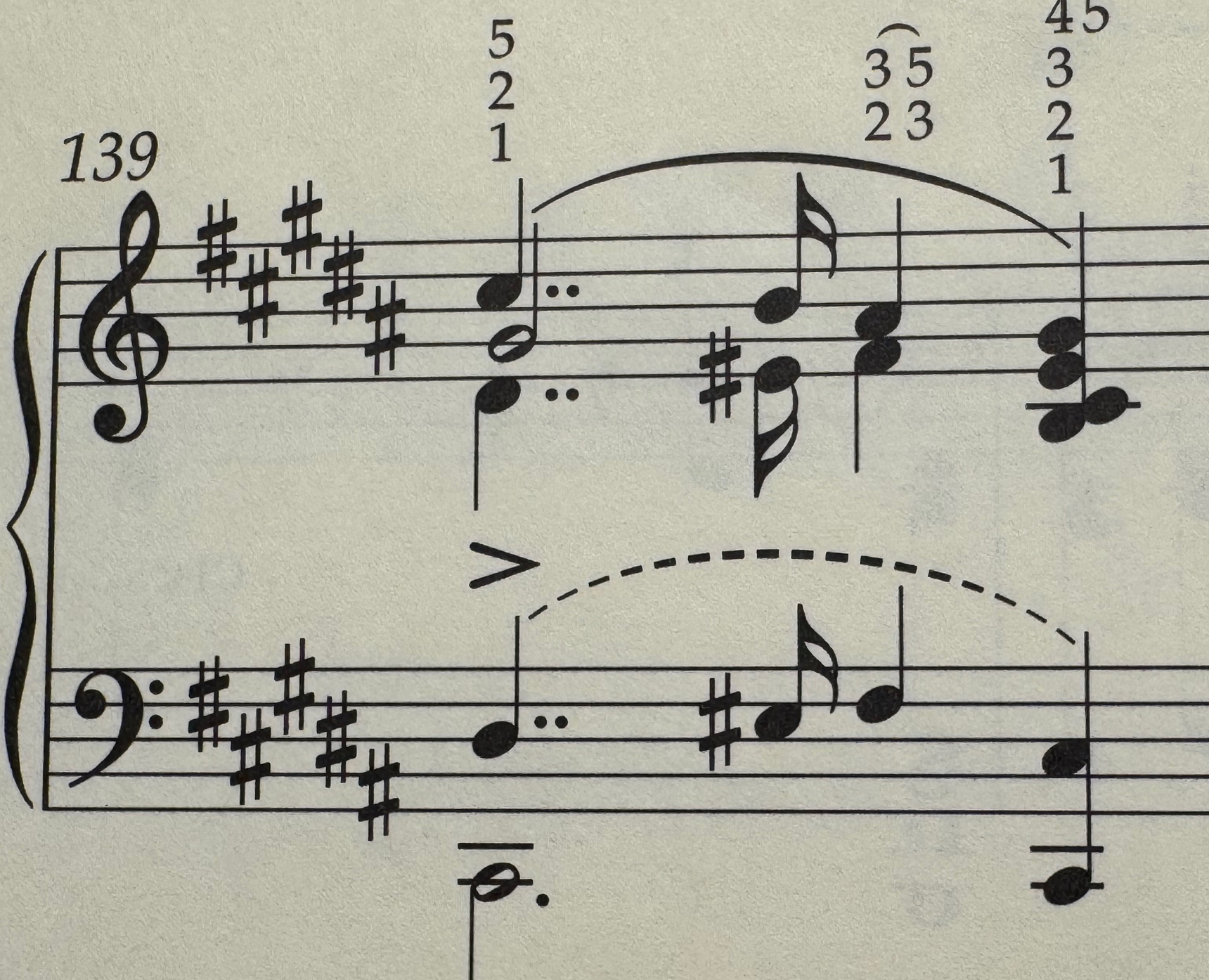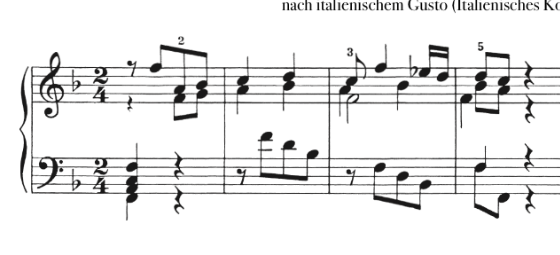Mastering Tricky Passages and answering your questions!

Welcome everyone - Dominic is back to help you! Do you have questions about your playing, fingering, challenging passages, or musical hurdles you’re trying to overcome? Whether it’s a simple query or a complex issue, every question matters, and every solution makes a difference! Join us live today for real-time advice and solutions from Dominic Cheli—your guide to mastering music, one finger at a time!
Leave any and all questions below!
20 replies
-
I’m interested in hearing more about the benefits of Marc-André Hamelin’s Exercises for the Mind and Fingers, specifically the exercise of mirroring. Developing a musical mind is critical, and it appears that he uses the mirroring exercise (he refers to technique as mechanics) more to improve mechanics than to develop that musical mind. From my practice of mirroring, I find an improved awareness of intervals to be the greatest benefit (and so far, the only one).
He quotes Ganz as saying that, other than developing the left hand, mirroring is of considerable benefit.
Is there something more to mirroring?
PS: On page 10 of the workbook of this lesson, bar 4 of Bach’s Invention in C major, might the 4th last note in the bass be a Bb instead of a B#?
-
Hi Dominic, I'm looking forward to another great session. I've learned a lot from each previous one.
My question for this one has to do with the climactic measures 26 and 27 of Rachmaninoff's Prelude in Bb Minor. (see attached PDF). There are a couple of places where I must reach down with my RH thumb to play the top notes in the LH chords, because my LH can't make the stretch, and because rolling the LH chords seems to weaken their impact. My question is, should I also do the same thing with each of the other chords in order to maintain a consistent hand shape for each parallel beat.
The two places in particular where I must reach down are the Gb Minor chords on beats 4 of each of measures 26 and 27. I play the top Bbb in the LH with the thumb of my RH. These are circled in red and labeled "RH" [with no question mark].
My question has to do with the down beats of each of the other chords - the Db7 and the Bb7 chords in each measure. These spots are also circled in red and labeled "RH?"on the attached PDF. I can reach the LH chords comfortably with my LH, but should I nonetheless play the top notes of each chord with my RH thumb in order to maintain a consistent hand shape accross all of these parallel passages? The consistent hand shape requires less thinking and adjustment from chord to chord, but then requires a bigger leap back up to the following 16th notes of the RH. Efficiency is at a premium here, since the tempo is fairly fast and the RH leaps are formidable. .
Actually my real question is: what would YOU do with this passage?! thanks!
-
Hi Dominic,
I'm learning Burgmuller's Ballade (from the opus 100), and trying to increase the tempo. The primary challenge I'm having is in measures 3 & 4 - once I get to a certain tempo the LH notes become uneven. What is your advice for increasing tempo here while still maintaining evenness?
Thanks.
-
I have question on Bach WTC book 2 G major fugue, Bar 61, for the left hand trill, I want to use my 1 and 2 finger to play the trill. But I can only reach D and C# with my 1 and 5 fingers together, and not 2 and 5. How should I play this? Do I roll it?
In different versions, similar to bar 61, on bar 50, 52, 57 and 58, the trills are marked as upper mordent. I've heard it played both ways in professional recordings. I like it played as trills but it is much harder to make it sound smooth. any tips?
Thanks again for all your help!
-
Hi Dominic,
I’m currently working on the last three pages of Chopin’s Polonaise-Fantaisie Op.61, and I’m curious to hear your opinion about the passages where the 3-against-4 rhythm appears — sometimes with triplets in the right hand against sixteenths in the same hand, and sometimes together with the left hand.
My question is: should the triplets be executed strictly as 3 against 4, or is it acceptable to interpret them more freely, perhaps leaning toward expressive rubato or aligning them slightly for fluidity?
I’ve heard different interpretations: some pianists keep the polyrhythm crisp and clear, while others seem to blur it slightly for phrasing or emotional effect. I’m especially interested in how you handle this balance between rhythmic integrity and musical expression.
Thanks in advance for your insights!
-
Hi Dominic,
Probably more than my fair share of questions! Schubert problems partly caused by my smallish hands in Impromptus and a late piano piece.
1) Drop the base note early or pedal and blur the harmonies above?

2) Turn ornament across wide gap in a melodic phrase, hard to execute and hold the right hand quarter notes without messy pedaling. What notes, what fingers for the turn?

3) Similar small hand, melodic turn ornament problem. I can do it by leaning far back and to the left, but it sure is awkward. Alternatives?

4) What do I do with my arm and hand to get quickly up to the E flat in the second measure?

5) It's pp. There are fast tremolos in the heavy bass keys which are hard to play quietly. How? Center axis of rotation on the upper note of the tremolo, so lower note is the louder of the two, and just kinda bounce of the upper one? Hand fixed and just rotates, or some other maneuver to plant first on the key bed and wiggle away from it to sound the notes?

6) Again, the desire to play base note groups more quietly. I'm most successful at bouncing off the key bed to just above the escapement. But I sure would like to use the pedal to connect the soprano line while shifting hand position, without having to swap fingers on the soprano line. But then the pedal can lead to accumulation of loud bass chords.
What would you do?

7) What is the best trick to suppress the babbling sextuplets throughout, allowing the melody above and sometimes below to sing, be connected by the pedal, while maintaining the pp dynamic? I've had some success by planting the fingers on the sextuplet figures, keeping them in the key bed, and maneuvering my wrist to sound them by lifting just above the escapement. Other approach?

I think most of these problems are artifacts imposed by the modern piano with wider keys and big sustain. On the modern piano, I can stretch to an octave +1 note from the key edge. On a Broadwood, more like octave +3. And of course the key dip is more shallow, and the sustain diminished.

Thanks for selecting any of these examples you feel would be interesting to share with the community!
Michael
-
Dominic - my question is about fingering in Bach's Italian Concerto mvt 1. The RH in the first few measures. Of course, this pattern repeats many times:

Specifically m3 to m4 in the RH. I am guessing I need to lift my hand and shift downward so I can use 1-3-5 at the beginning of m4? It is all very awkward, what with the held notes and the melody line on top!
Thanks!
-
Hi everyone, I'm looking forward to today's session & hearing what Dominic will have to say about yours and my questions. I might be caught in transit and not able to join the chat, but will at least be listening on my phone and able to check the video later. But with some luck maybe I'll be able to join live and share some thoughts on the chat too. These sessions by Dominic are among my very favorite ToneBase offerings!
-
Hi Dominic, sorry for the last minute questions: could you help with Faure’s Dolly suite No.5, Tendresse. The secondo part is very awkward for me complicated harmony page 2 technically difficult to swing or bounce. No 6 Spanish dance , again the bounce to be in a fast tempo how to be accurate.
Mozart quartet in g, pianos solo passages bar202-203 , 203 is the tongue twister, how to not go wrong. Thank you. Priscilla
-
Below is the bar 203
-
Might you be able to talk about Schumann The Poet Speaks M12. I'm not sure what hand plays what and when just before the downward arpeggio, the B in Treble Clef has a dotted line going to the B in the Bass Clef. Also, I can't reliably reach a 10th in the last Measure. What are my options? Thanks
-

Might be trivial by comparisson, but I'm struggling with this. I can play it slowly, but this is supposed to be played at 147bpm. I have trouble with being accurate and it feels like I'm digging into the keybed and stretching. This is from a modern piano concert from a famous Swedish pianist. Any advice? I think the hardest part is all the tension that slows me down.
I can just about reach a ninth
-
Hi Dominic, a couple of questions about the fingerings in Clara Schumann’s piano concerto first movement. What will be the best fingerings for the passages in R.H. with the double notes, and other two screenshots for the left hand. Thank you
-
Hi Dominic, sorry for the last-minute question. I have a question about Chopin's Nocturne in g minor (15 no.3). Specifically, in measures 35 and 36 with the double triplets. I struggle playing leggieriss. and accenting the 1st note while producing a lighter sound for the rest of the triplets (Especially the 2nd note). What would you recommend? I find that when I use 1 and 2, it produces and same sound, so the 1st note isn't accented.
Also, I struggle with measure 32 in the Eb Major Nocturne (9 no.2). In the 4 16th notes that are repeated 12 times, I can't consistently play them without my hand seizing up. I use the fingering 3241. I tried 3251, but that feels awkward. Any recommendations?
Thanks for the help. -
Thanks Dominic, your thoughtful analysis and approach is always helpful! I always learn massively from your solutions to the challenges that everyone brings, as your methodology to problem solving is broadly applicable far beyond the examples that we bring to you for these sessions.
-
Thank you!
-
Hi Dominic,
I have been practicing Bach's Invention in G major.

The third trill in the bar has 4th finger shown in the score. . I need to twist my wrist to help playing that.
Is that the best way to tackle it?
It is simple question but any suggestion from others are appreciated.
Thanks!
Terence
-
I am catching up on lessons that I have missed. These "answering your questions" sessions are fascinating! Thank you!